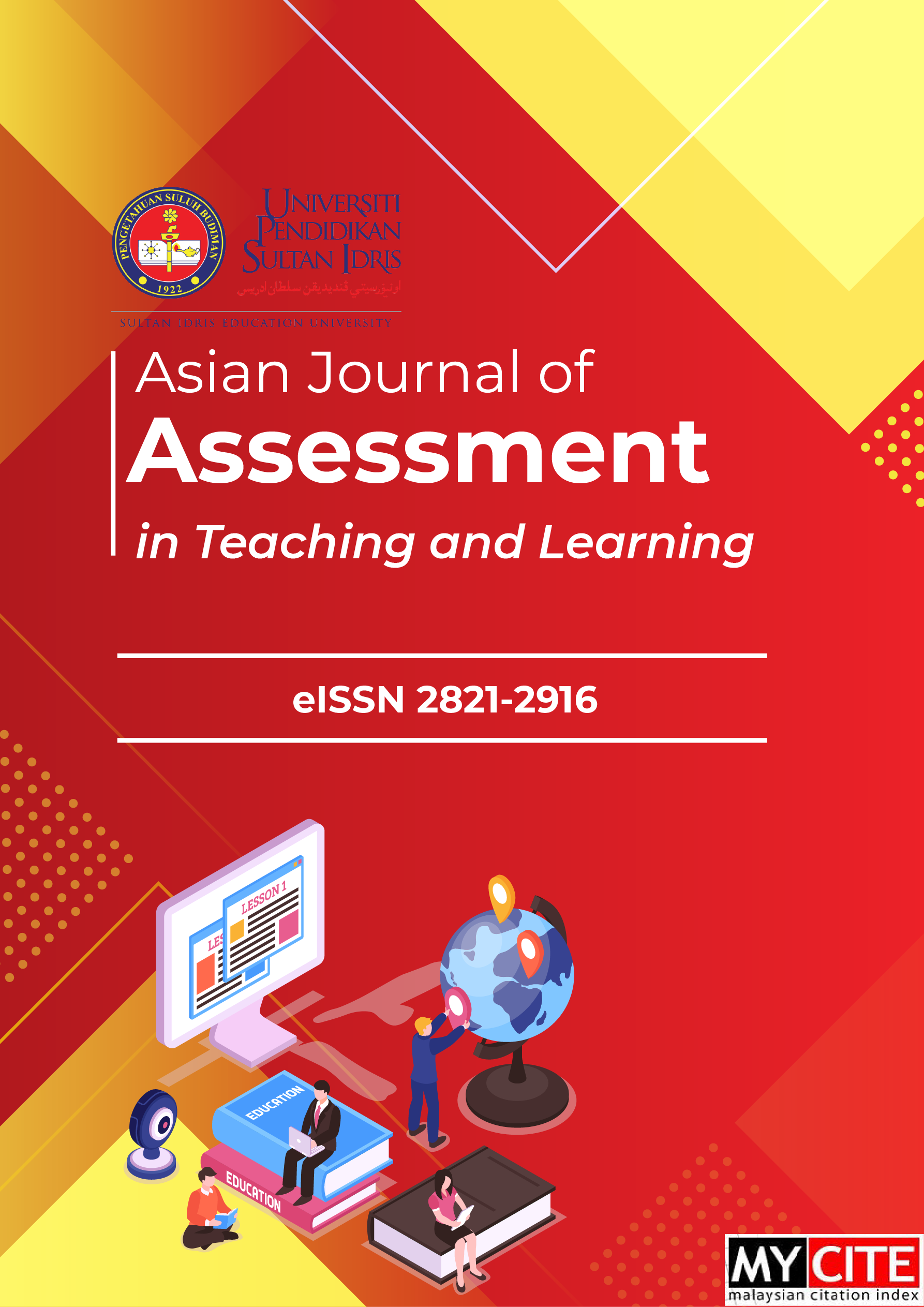An Analysis of validity of test items in chemistry final semester examination for vocational students majoring in computer and networking engineering in Bantul Regency
DOI:
https://doi.org/10.37134/ajatel.vol10.1.4.2020Keywords:
test items quality, final examination test items, vocational school, Chemistry teacherAbstract
This research aims to investigate the quality of final examination test items given to the Computer and Networking Engineering students. The test items were developed by four chemistry teachers in the state vocational school (SVS) and private vocational school (PVS) in Bantul regency respectively. This research discusses on the quality of the test conducted and overall items developed by the chemistry teachers for both of SVS and PVS. The quality of the test items is measured by using four variables which are (1) material, construction, and language aspects, (2) cognitive level comparison, (3) the suitability of the materials tested to the materials covered in 2013 Curriculum, and (4) the suitability of the number of the test items given to the materials covered and time allocated. Ex-post facto research design was administered for this research. The sample of the research was taken from the final examination test items for the 10th grade vocational school students of the Computer and Networking Engineering in Bantul regency for 2017/2018 academic year. The schools that involved in this research were represented by four schools for each of the SVS and PVS. The quality of the final examination test items was measured by using the instrument that was validated by three lecturers who are specialized in chemistry education. Each variable was analyzed descriptively using performance average. For variable 1, it was found that the quality of material, construction, and language of the final examination test items for both schools’ categories were very good. For variable 2, the quality of cognitive level of the final examination test items by SVS was very poor but poor for the PVS. However, it was a reversal for variable 3, when the PVS was very good prevailed by the mean percentage of the suitability of the materials tested to the materials covered in 2013 Curriculum compared to the SVS which was only in good category. For variable 4, the suitability of the number of test items given to the materials covered and time allocated, the mean percentage in SVS was very poor but poor for PVS. In conclusion, the overall of the quality test items developed by both the SVS and PVS chemistry teachers, was in good category for variables 1 and 3, and poor for variables 2 and 4. To conclude, this research able to observe that vocational school chemistry teachers for both SVS and PVS are able to construct good quality and appropriate test items.
Downloads
References
Cizek, G. J. (2000). Pockets of Resistance in the Assessment Revolution. Educational Measurement: Issues and Practice, 19(2), 16.
Hamdan, N., Kiong, T. T., Heong, Y. M., Masran, S. H., Yunos, J. M., Mohamad, M. M., ... & Haris, M. H. M. (2019). An Effectiveness of High Order Thinking Skills (HOTS) Self-Instructional Manual For Students’assignment Achievement. Journal of Technical Education and Training, 11(1)
Hui, H., & Wei, W. (2013). A Study on Formative Assessment of EFL in the Multimedia-based Environment in China. Asian Journal of Assessment in Teaching and Learning, 3, 1-14.
Krathwohl, D. R., & Anderson, L. W. (2009). A taxonomy for learning, teaching, and assessing: A revision of Bloom's taxonomy of educational objectives. Longman.
Siswandani, S. (2015). Penerapan Penilaian Berdasarkan Standar Penilaian Pendidikan (Permendikbud Nomor 66 Tahun 2013) Di Kelas Iv Sdn Junrejo 02 Kota Batu (Doctoral dissertation, University of Muhammadiyah Malang).
Mardapi, D. (2012). Pengukuran penilaian dan evaluasi pendidikan. Yogyakarta: Nuha Medika, 45.
Meng, C. C., & Idris, N. (2015). Form Four Science Students' Perceptions of the Quality of Learning Experiences Provided by Assessments in STEM Related Subjects. Asian Journal of Assessment in Teaching and Learning, 5, 50-56.
Mokshein, S. E. M., Lebar, O., Rahmat, A., Dollah, M. U., Muhammad, A., Mansor, N. A., ... & Noor, N. M. (2015). Development and Validation of Assessment Practice Inventory for Teacher Educators. Asian Journal of Assessment in Teaching and Learning, 5, 25-43.
Nasir, N., Adam, S. B., Rosli, N. N., Abdullah, M. S., & Azman, M. N. A. (2017). Kompetensi Pembimbing dalam Sistem Latihan Kemahiran Dua Hala: Satu Sorotan Literatur. Sains Humanika, 9(1-5).
Sunarti, S. R. (2014). Penilaian Dalam Kurikulum 2013. Yogyakarta: CV Andi Offset.
Sudijono, A. (1998). Pengantar evaluasi pendidikan. PT RajaGrafindo.
Sukardjo. (2009). Penilaian Hasil Belajar Kimia. Yogyakarta: FMIPA – UNY.
Supardi (2015). Penilaian Autentik: Pembelajaran Afektif, Kognitif, dan Psikomotor (Konsep dan Aplikasi). Jakarta: RajaGrafindo Persada.
Wagiran, Retnowati, E., & Azman, M. N. A. (2020). When Vocational Teachers Improve Their TPACK Competencies Through Lesson Study. International Journal of Psychosocial Rehabilitation, 24(4), 1475-7192.
Downloads
Published
Issue
Section
License
Copyright (c) 2020 UPSI Press

This work is licensed under a Creative Commons Attribution-NonCommercial-ShareAlike 4.0 International License.





